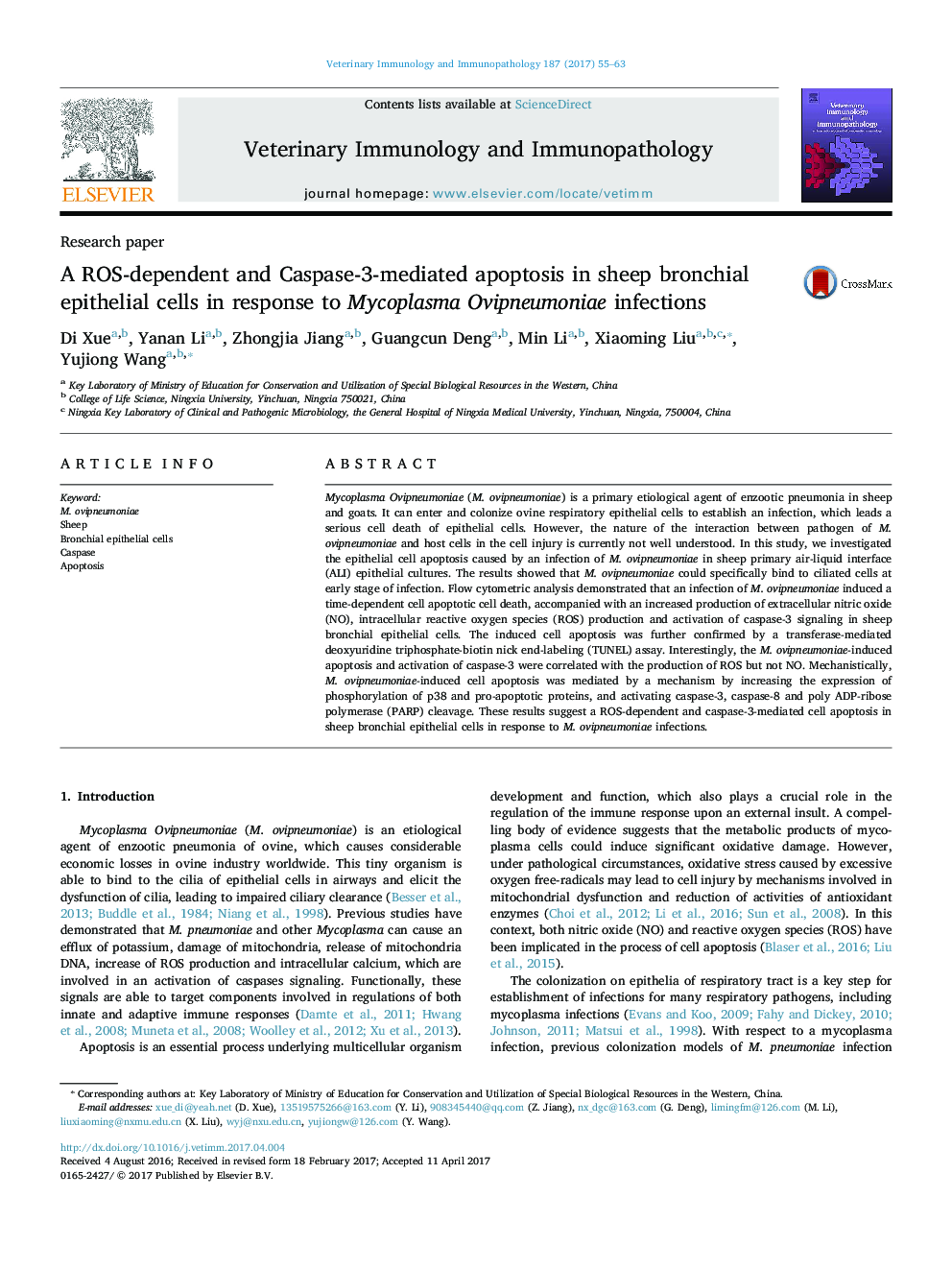| Article ID | Journal | Published Year | Pages | File Type |
|---|---|---|---|---|
| 5544728 | Veterinary Immunology and Immunopathology | 2017 | 9 Pages |
Abstract
Mycoplasma Ovipneumoniae (M. ovipneumoniae) is a primary etiological agent of enzootic pneumonia in sheep and goats. It can enter and colonize ovine respiratory epithelial cells to establish an infection, which leads a serious cell death of epithelial cells. However, the nature of the interaction between pathogen of M. ovipneumoniae and host cells in the cell injury is currently not well understood. In this study, we investigated the epithelial cell apoptosis caused by an infection of M. ovipneumoniae in sheep primary air-liquid interface (ALI) epithelial cultures. The results showed that M. ovipneumoniae could specifically bind to ciliated cells at early stage of infection. Flow cytometric analysis demonstrated that an infection of M. ovipneumoniae induced a time-dependent cell apoptotic cell death, accompanied with an increased production of extracellular nitric oxide (NO), intracellular reactive oxygen species (ROS) production and activation of caspase-3 signaling in sheep bronchial epithelial cells. The induced cell apoptosis was further confirmed by a transferase-mediated deoxyuridine triphosphate-biotin nick end-labeling (TUNEL) assay. Interestingly, the M. ovipneumoniae-induced apoptosis and activation of caspase-3 were correlated with the production of ROS but not NO. Mechanistically, M. ovipneumoniae-induced cell apoptosis was mediated by a mechanism by increasing the expression of phosphorylation of p38 and pro-apoptotic proteins, and activating caspase-3, caspase-8 and poly ADP-ribose polymerase (PARP) cleavage. These results suggest a ROS-dependent and caspase-3-mediated cell apoptosis in sheep bronchial epithelial cells in response to M. ovipneumoniae infections.
Related Topics
Life Sciences
Agricultural and Biological Sciences
Animal Science and Zoology
Authors
Di Xue, Yanan Li, Zhongjia Jiang, Guangcun Deng, Min Li, Xiaoming Liu, Yujiong Wang,
